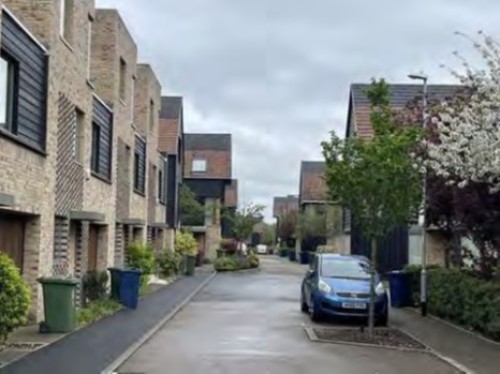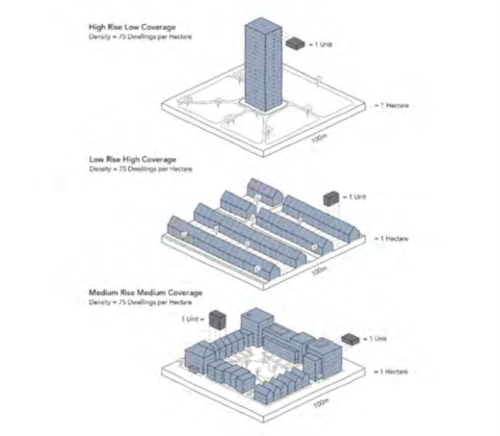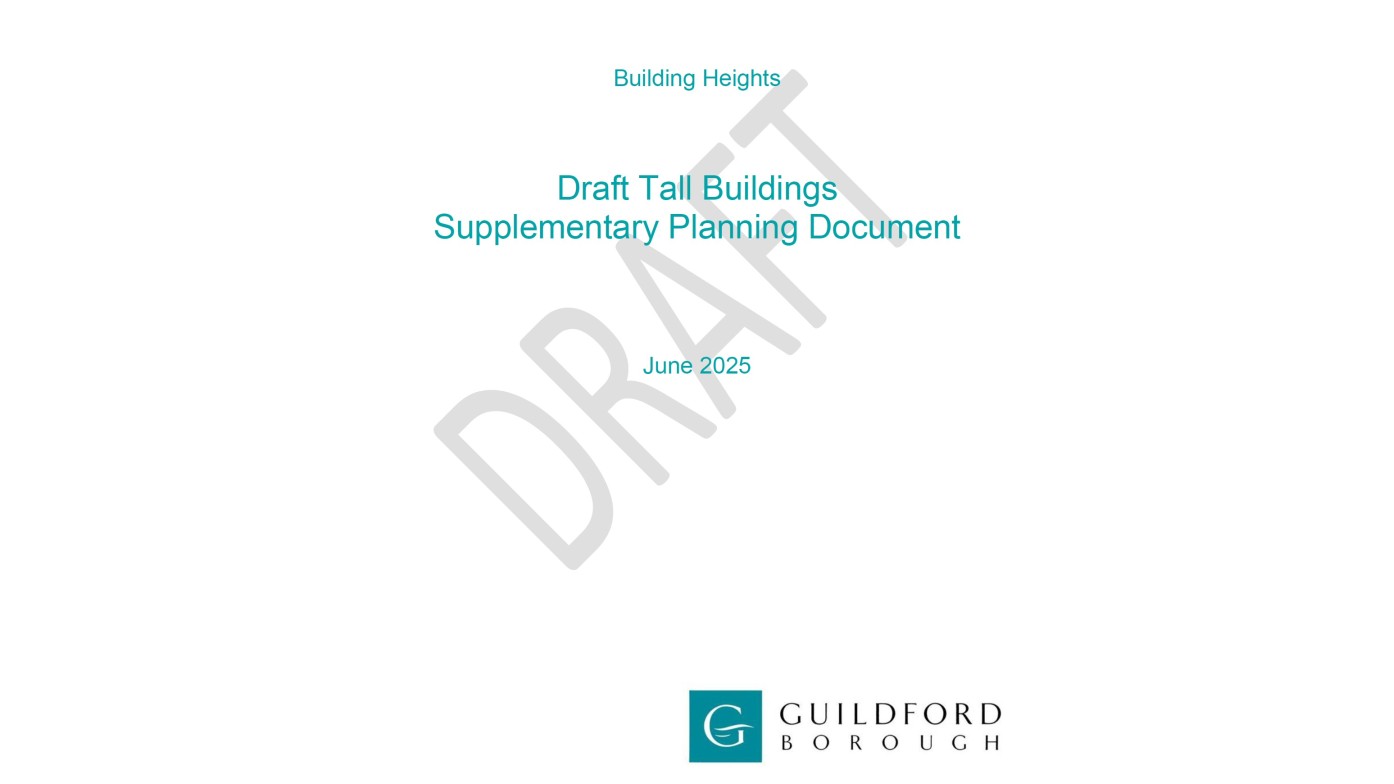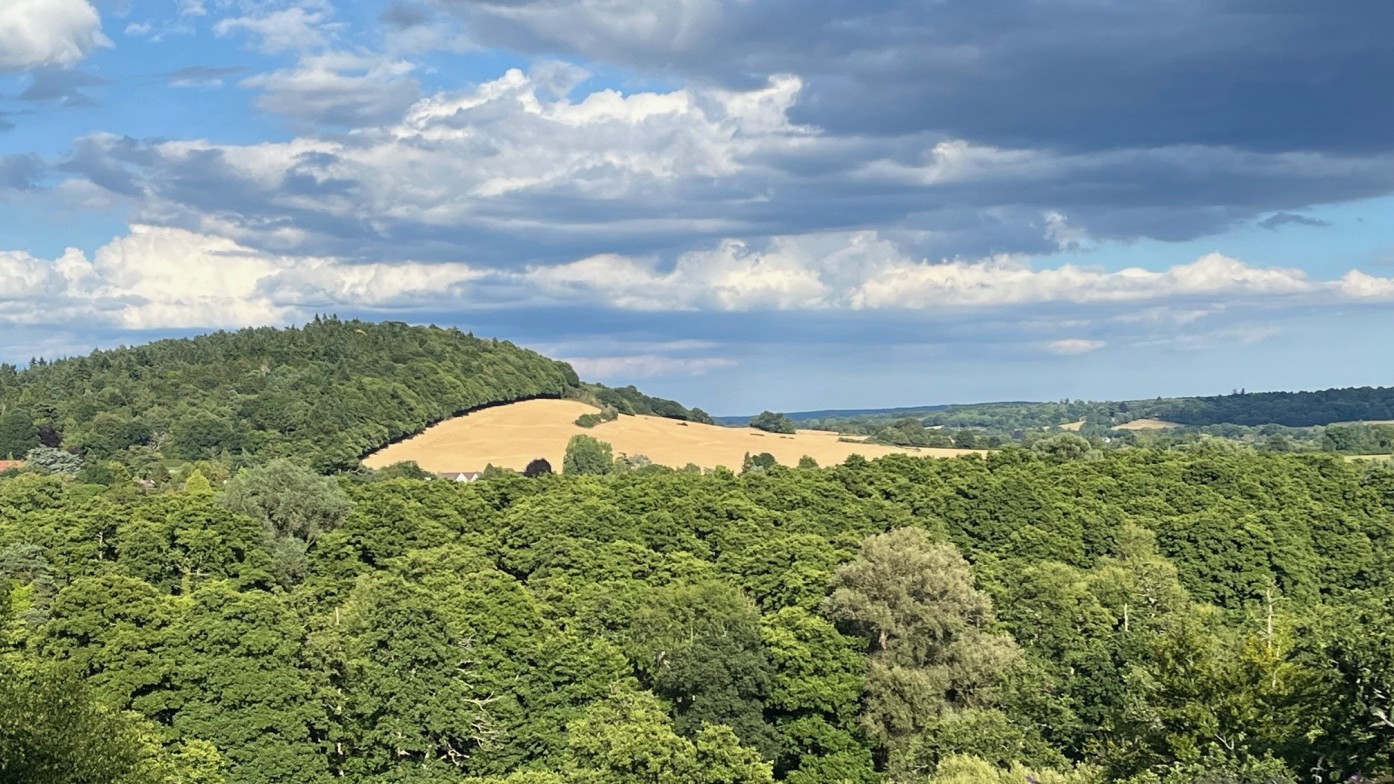Heading Illustration from Guildford Borough Council Strategic Development Framework Supplementary Planning Document 2020
Guildford’s new housing targets are ambitious: the Government’s Standard Method now calls for 1,000 new homes per year—double the previous figure. This is especially tough in a borough with large greenbelt zones, challenging landscapes, infrastructure limitations, and protected natural areas like the Surrey Hills National Landscape (previoisly AONB).
With limited land available, it’s essential to maximise the use of brownfield and allocated sites to meet these demands and avoid unnecessary incursion into the countryside. Building low-density housing would squander Guildford’s most precious asset—its land. That’s why getting density right is so important.
The Guildford Society believes we must rethink and increase housing density in Guildford. We’ve developed a discussion paper that draws from innovative developments already achieving greater densities than those planned for many major sites locally. See paper at this link. This paper can be viewed as a companion paper to the previously developed paper on building height. See paper at this link.
We’ve examined how several local authorities are managing density, usually as part of comprehensive urban planning initiatives. Four case studies are highlighted in our paper, showing that higher density—when combined with thoughtful placemaking—can create vibrant, attractive neighbourhoods. We also explore the opportunities that come with denser, well-designed communities.
Higher density often raises questions about privacy, amenity space, and overall quality of life. However, our research and case studies show that through excellent design and innovative housing typologies, these issues can be overcome. Well-planned, higher-density developments can offer great places to live with thoughtful layouts, amenities, and green spaces.

The photo above features ‘Abode’ at Great Kneighton, where the density reaches 55 Dwellings Per Hectare (dph)—significantly higher than the 25-30 dph commonly found in traditional suburban developments. Notably, this is achieved with low-rise construction. (Source: Cambridge Architectural Research Ltd)
Housing density in England is typically expressed in Dwellings Per Hectare (dph)—the number of self-contained dwellings in a given area. While this metric tells us how many homes there are, it doesn’t address the size or form of those dwellings. The graphic below shows that very different building layouts can all achieve the same density of 75 dph.

It’s time for Guildford to embrace smarter, denser development—protecting our countryside while delivering the homes we need. With the right approach, higher density isn’t just possible—it’s desirable.
 Consultation on Tall Building Heights in... View article
Planning policy plays a crucial role in shaping development by providing clarity to developers and decision-makers about expectations. The Local Plan includes policies addressing design, which are vital for proposals involving taller buildings. A com... View article
Consultation on Tall Building Heights in... View article
Planning policy plays a crucial role in shaping development by providing clarity to developers and decision-makers about expectations. The Local Plan includes policies addressing design, which are vital for proposals involving taller buildings. A com... View article
 Pressure on the Greenbelt. View article
The Green Belt in UK planning serves as a method to manage urban growth and protect rural landscapes. The overarching goal is to maintain a clear distinction between urban and rural areas. This openness is both visual and spatial, not just the absenc... View article
Pressure on the Greenbelt. View article
The Green Belt in UK planning serves as a method to manage urban growth and protect rural landscapes. The overarching goal is to maintain a clear distinction between urban and rural areas. This openness is both visual and spatial, not just the absenc... View article
Help us make Guildford better
We want our town to be vibrant, attractive and liveable. We support development that brings a sense of place and enhances the best aspects of our town. If such aims can be embraced, we believe Guildford has the chance to lead the way in enabling sensitive and sustainable development.
Pressures for development are increasing. Planning rules are being eased. The Society’s commitment to standing up for Guildford is needed more than ever.
Support Us
Getting involved allows the society to continue its work. We welcome new members, from every age and background. Membership provides an opportunity for you to contribute to the continued health of the town and surrounding area, and to meet other people who care about Guildford.